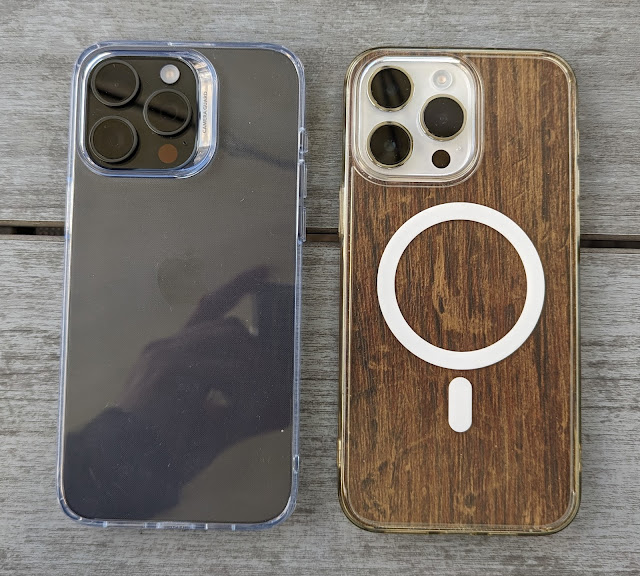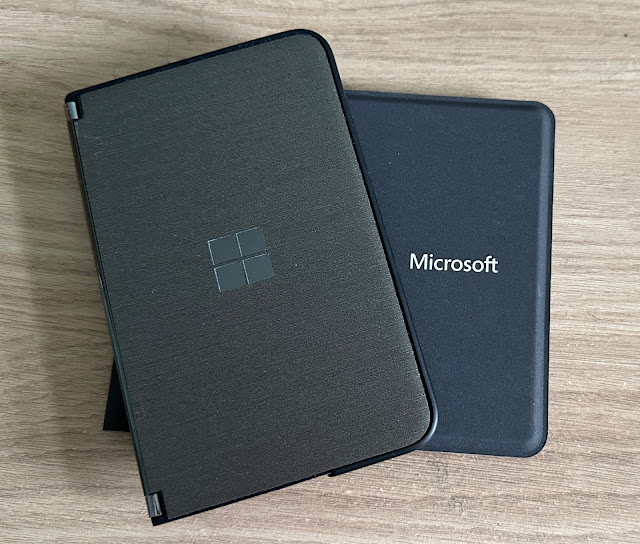Upgrading the (OG) Surface Go to Windows 11
The Surface Go, launched in 2018, is now seven years old. Never high end at the time (though do make sure you seek out the 8GB RAM version with the proper SSD), it is, nonetheless, a fabulous form factor.
A laptop which is also a tablet and, in form, passing for an iPad easily. Many is the time the family has headed off on a holiday and I've been 'banned from bringing a work laptop', yet I got away with it because I brought the Surface Go - everyone assumed it was an iPad that I'd brought along for a few games and some Netflix.
Add in decent stereo speakers, microSD expansion, hot swappable Alcantara keyboards, Surface Pen compatibility, two better-than-expected cameras, and super build quality, and you can see the attraction.
(NB: There was a Surface Go 2, 3, and 4, though I've only ever played with the original, picking up two of them second hand at super-cheap bundle prices over the years. Steve's Top Tip, as always, is to not buy stuff new but buy at half-price or less when second hand in mint condition! The Surface Go 2 was officially sanctioned as 'Windows 11 ready', while 3 and 4 came with Windows 11 out of the box.)
However, as we head further into 2025, Microsoft's deadline for stopping supporting Windows 10 is looming and in order to carry on using a Surface Go I wanted to experiment with it on Windows 11, which will be supported for many years to come. And yes, I realise that many W11 features (e.g. AI stuff) won't work properly on older hardware.
Now, the Surface Go doesn't meet Microsoft's minimum spec for Window 11 - in fact, many hundreds of millions of PCs don't, which is a rant for another day. Specifically, there's no TPM 2.0 module (Don't ask) and the Intel Pentium Gold CPU isn't considered powerful enough. But a great number of people have been experimenting with installing Windows 11 (using a method as described below) on outrageously low end devices - often as a proof of concept, but still inspiring for the project at hand here.
The core idea here is that Microsoft, partly for their own internal testing, put in a registry flag, AllowUpgradesWithUnsupportedTPMOrCPU, which tells the Windows 11 installer to bypass the rejection of older hardware and to press on regardless. Microsoft even documented this very publicly until recently, though they've now hidden it to stop regular, unskilled folk from trying the technique and coming unstuck!
Pasting in from Microsoft's original instructions:
Step 1: In Windows 10, press Start and type “Regedit”. Open the Registry Editor.
Step 2: On the left navigation panel, navigate to HKEY_LOCAL_MACHINE\SYSTEM\SETUP\MoSetup
Step 3: On the right pane, right-click an open area and select New, then DWORD (32-bit) Value.
Step 4: Rename New Value #1 to AllowUpgradesWithUnsupportedTPMOrCPU, and hit enter.
Step 5: Double-click the newly created DWORD and change its Value Data from 0 to 1. Hit Ok.
Aside from having to create the MoSetup key on my Surface Go, this was all I had to do to 'hack' Windows 11 on. The regular Windows 11 Download page allows anyone to grab the 5GB .ISO file.
This can be 'mounted' by right clicking it from your Downloads folder, or from an external USB stick or even microSD, depending on whether you're short of space or not.
Then you just run Setup.exe in the normal way. There is a scary warning near the start of the process that Windows 11 may stop working or stop getting updates, but at this point in Windows 10's life, this is all a risk that anyone getting this far will accept.
In use, Windows 11 seems to run much like Windows 10 - unsurprisingly, since much of it is exactly the same. And in some places it's simpler and faster to get to things - legacy items from Windows XP and Vista days are almost all gone now, wrapped up in the new UI and way of working. Which is good.
I strongly expect that Windows 11 will carry on working on the humble Surface Go for years to come, getting all of its core (and security) updates. Yes, some of the newer AI features may not arrive or work, but that doesn't bother me in the slightest.
And now you know too, should you own an original Surface Go and wondering what to do after this year in terms of software and updates!
PS. If you like my work then think about buying me a beer at paypal.me/stevelitchfield - thanks!




Comments